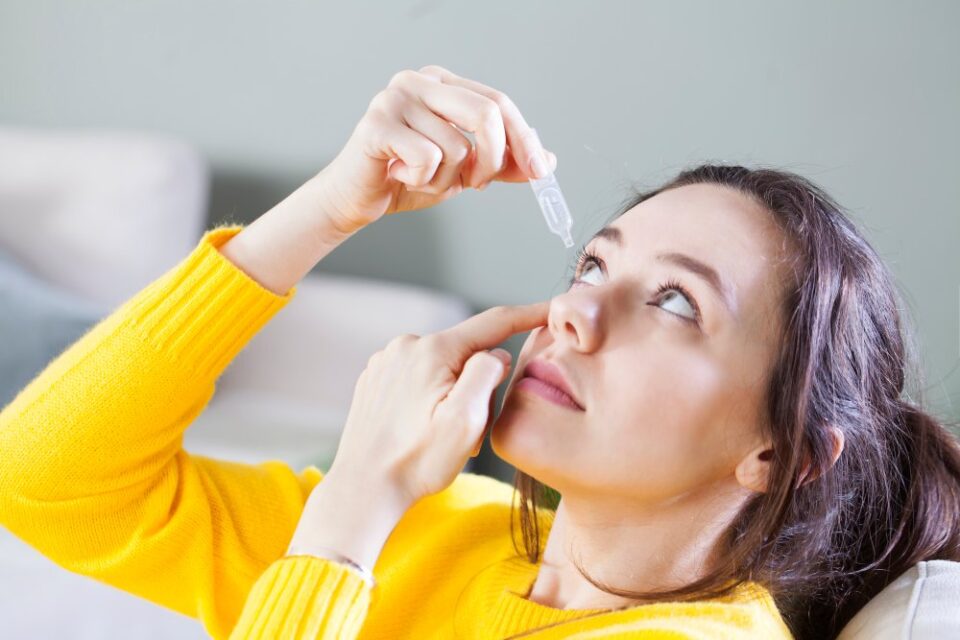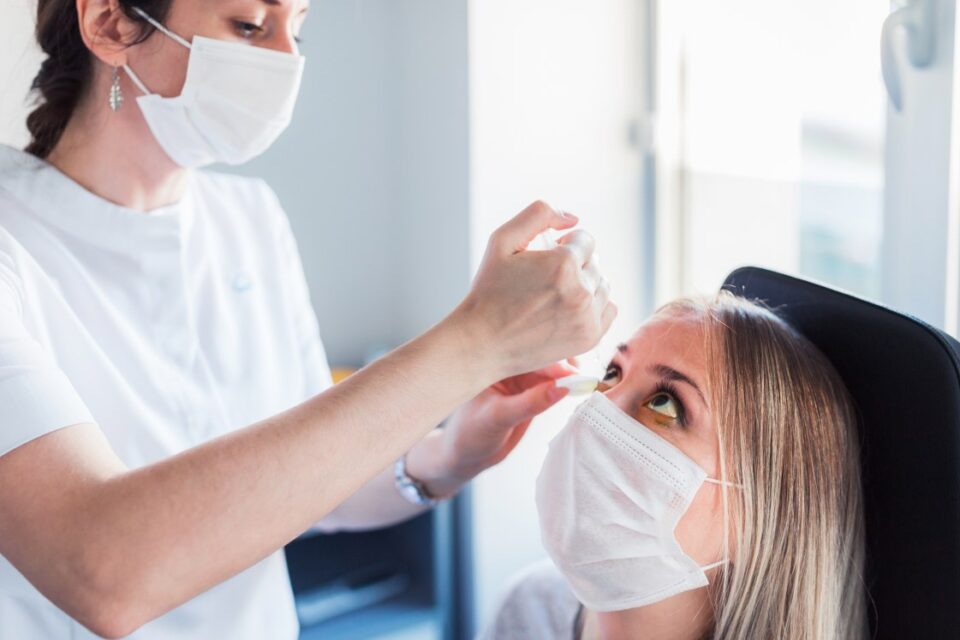Dry Eye Treatments in East Stroudsburg, PA
The Best Treatment for Dry Eyes
Experience relief from dry, irritated eyes with Pocono Eye Associates in East Stroudsburg, PA. Our dedicated team of experts is committed to providing tailored solutions to alleviate your symptoms and improve your eye comfort. Don’t let dry eyes hold you back – schedule a consultation today and take the first step towards clearer, more comfortable vision.

What Is Dry Eye?
Dry eye is a common eye condition characterized by insufficient production of tears or poor-quality tears that fail to lubricate the eyes adequately. This can lead to discomfort, irritation, redness, and a gritty eye sensation. Dry eye syndrome may result from various factors, including aging, environmental conditions, certain medications, and underlying medical conditions. Management and treatment typically involve artificial tears, lifestyle adjustments, and, in more severe cases, specialized therapies prescribed by an eye care professional to alleviate symptoms and maintain ocular health.
Types of Dry Eye Disease
Dry eye disease can manifest in various forms, each with its own underlying causes and symptoms. The primary types of dry eye disease include:
- Aqueous-deficient Dry Eye – This type occurs when the lacrimal glands fail to produce enough of the watery component of tears, leading to inadequate tear volume. It’s often associated with conditions like Sjögren’s syndrome or as a side effect of certain medications.
- Evaporative Dry Eye – This type results from excessive tear evaporation due to factors such as meibomian gland dysfunction. Meibomian glands secrete the oily layer of tears that helps prevent evaporation, and their dysfunction can lead to increased evaporation and dryness.
- Mixed Dry Eye – Some individuals may experience a combination of aqueous-deficient and evaporative dry eye, making diagnosis and treatment more complex.
- Non-Sjögren’s Dry Eye – This type occurs in individuals who do not have Sjögren’s syndrome but still experience dry eye symptoms due to other causes.
- Contact Lens-Induced Dry Eye – Wearing contact lenses can sometimes exacerbate dry eye symptoms, leading to discomfort and irritation for lens wearers.
- Environmentally Induced Dry Eye – Environmental factors like dry or windy conditions, air conditioning, or prolonged screen time can contribute to dry eye symptoms.

Cause of Symptoms of Dry Eyes
Dry eye is characterized by a range of symptoms, including a persistent dry or gritty feeling in the eyes, excessive tearing (a reflex response to dryness), redness, burning or stinging sensations, sensitivity to light, and blurred vision. These symptoms can result from various causes, including aging, hormonal changes (especially in women), environmental factors like dry or windy conditions, frequent screen use, certain medications, underlying medical conditions like Sjögren’s syndrome, and meibomian gland dysfunction. Understanding the underlying causes of dry eye is essential for effective management and treatment, which may involve artificial tears, lifestyle adjustments, medications, or specialized therapies prescribed by an eye care professional.
Diagnosis of Dry Eye
Diagnosing dry eye typically involves a comprehensive eye examination by an eye care professional. The evaluation includes reviewing the patient’s medical history and symptoms and thoroughly examining the eyes and tear film. Specialized tests may assess tear quality, quantity, and stability. These tests can include the Schirmer test to measure tear production, tear breakup time (TBUT) to assess tear film stability and evaluate the ocular surface for signs of dryness or inflammation. In some cases, additional tests like meibomian gland assessment or imaging of the tear glands may be performed to pinpoint the underlying cause. A precise diagnosis is essential for developing a tailored treatment plan to effectively manage and alleviate dry eye symptoms.
When to Contact a Medical Professional
If you experience persistent or bothersome dry eye symptoms such as dryness, redness, irritation, or blurred vision, it’s advisable to contact a medical professional, such as an ophthalmologist or optometrist. Additionally, seeking professional evaluation and management is essential if you have an underlying medical condition, like Sjögren’s syndrome or autoimmune disorders, which may contribute to dry eye. Prompt diagnosis and treatment can help alleviate discomfort, prevent complications, and improve your overall eye health and quality of life.
Treatment at Pocono Eye Associates
Experience relief from dry, uncomfortable eyes with Pocono Eye Associates. Our dedicated team in East Stroudsburg, PA, specializes in dry eye medication and treatment, offering tailored solutions to alleviate discomfort. Don’t let dry eyes disrupt your daily life – schedule a consultation today and take the first step toward more comfortable, clearer vision. Your eye comfort matters, so book your appointment to start feeling better.
Reviews
I had a traumatic injury to my eye and called to be seen on an emergency basis on a Friday despite that I wasn't an established client. The receptionist was kind and thorough. The office was clean, and the doctor and technical staff were very professional. There was very little wait-time on both my initial and follow-up visits. Highly recommended.
If I hadn't gone to them I'd still be wearing glasses. First ophthalmologist I saw didn't even tell me that there were toric implants that correct my astigmatism available for my cataract surgery. Thank goodness for Pocono Eye!
The service here was really great! The doctor was very cautious about dilating my eyes once he discovered I have narrow angles, which made me felt I was in good hands. Would highly recommend!
I have never had an issue here. I've been going numerous years now. Even when they did not accept my insurance I would come here. I have pressure issues with my eyes and they have been amazing with keeping it in check. The turn around with the nurses is high now but what matters to me is the Dr. I have nothing but positive things to say about Dr. Negvesky.
I have been going here for years. Both Dr. Young and Dr. Pyle are great. Very knowledgeable. I wouldn't trust anyone else with my eyes!
I came in to have my eye glases adjusted and a lense put back in place. They had everything done in 15 minutes, we're quick to serve, and very polite. They didn't even charge for anything! Very happy customer!
